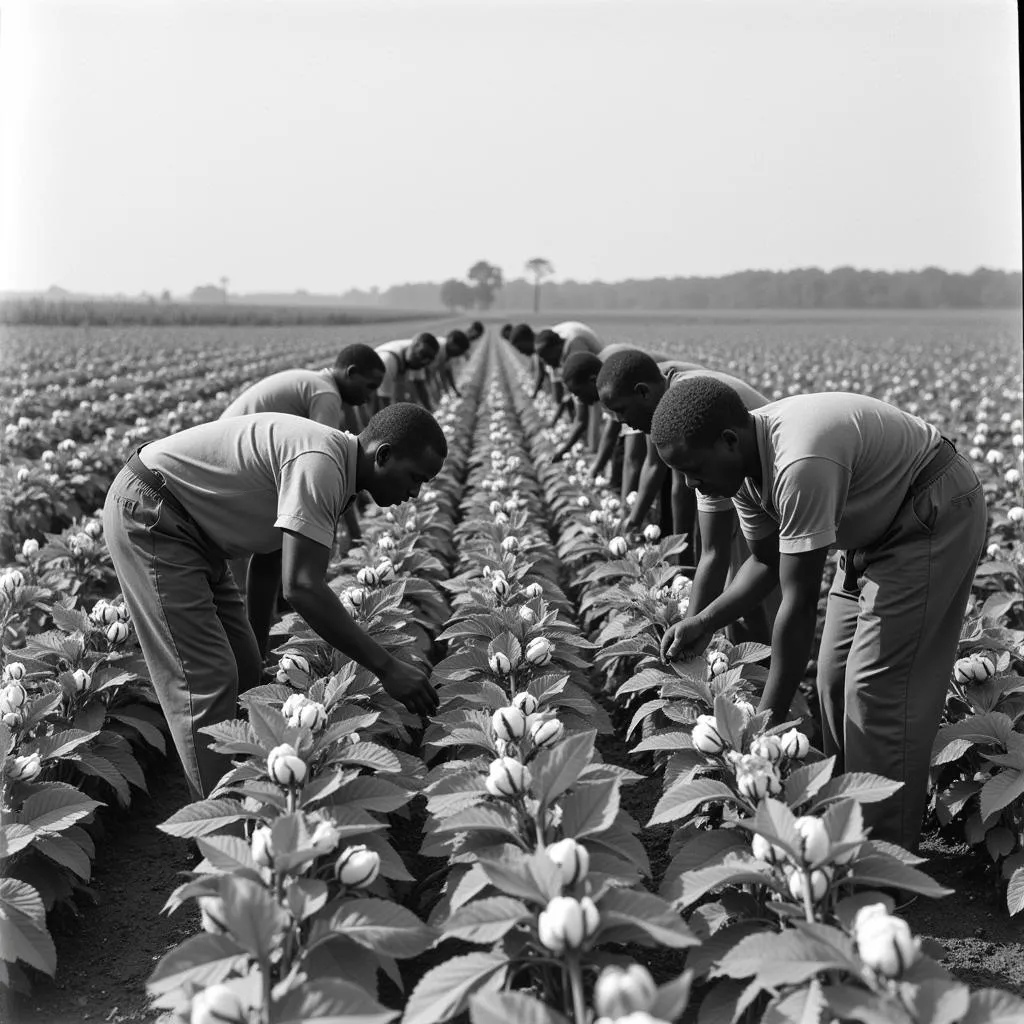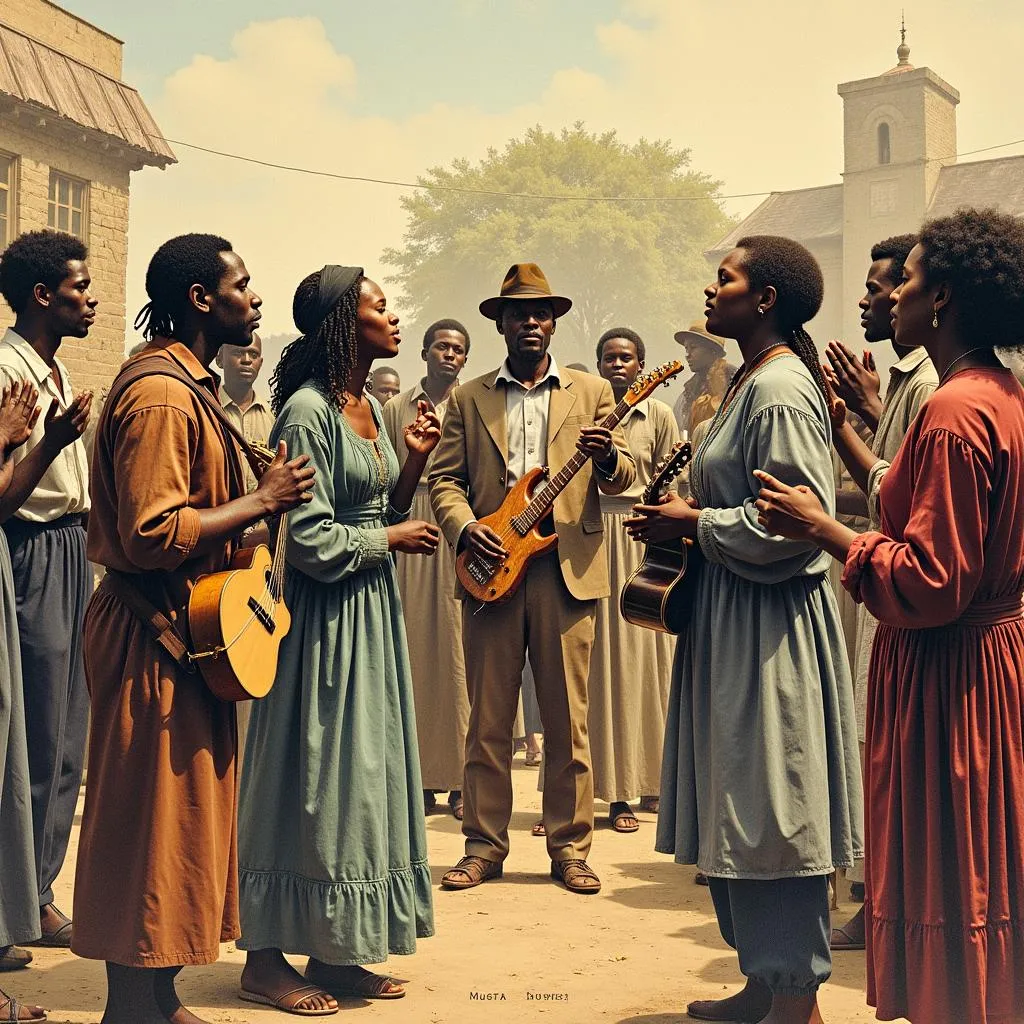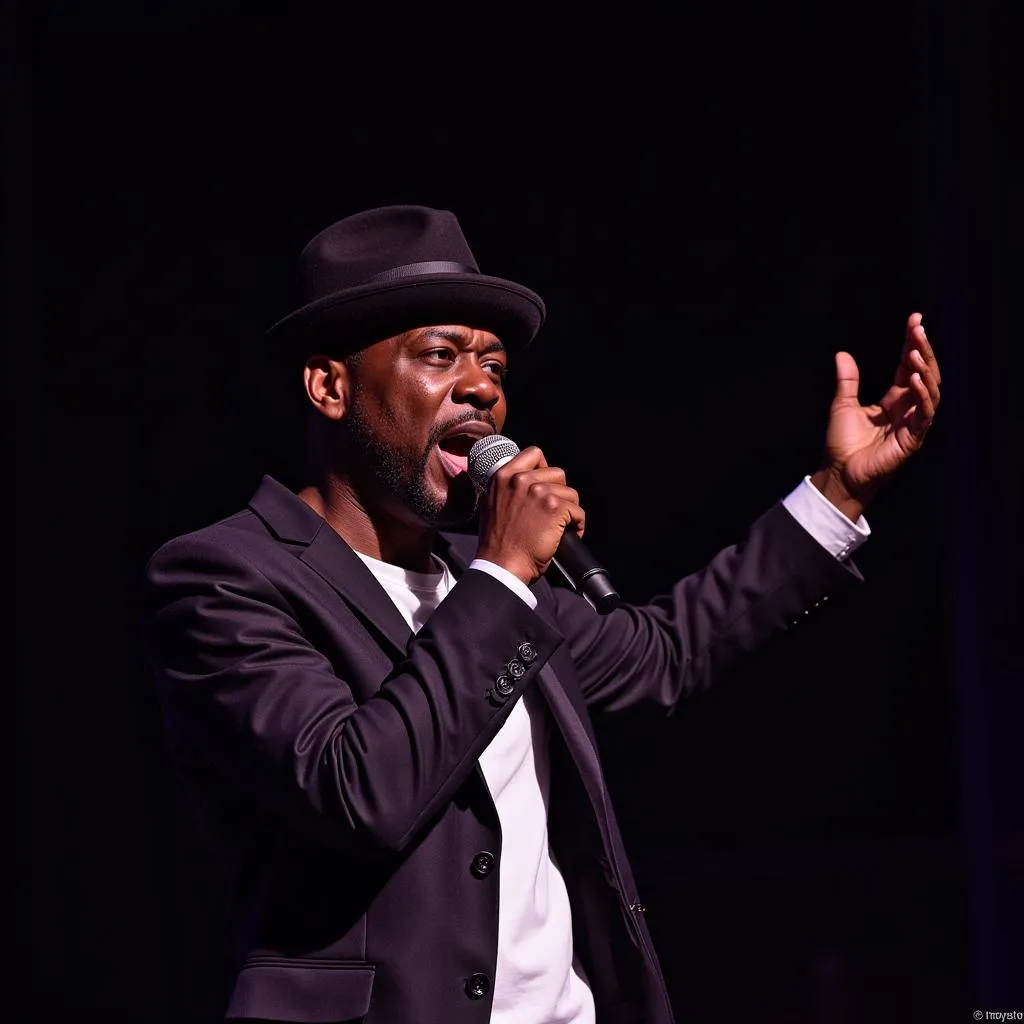African American Work Songs And Hollers stand as powerful testaments to the resilience and creativity of a people who transformed hardship into art. These musical expressions, born out of the brutal realities of slavery and later Jim Crow, served as more than just melodies; they were lifelines of hope, tools of resistance, and threads that wove a community together.
More Than Just Music: The Multifaceted Role of Work Songs and Hollers
Work songs, often characterized by call-and-response patterns and synchronized rhythms, helped laborers regulate their movements and endure the monotony of repetitive tasks. From the cotton fields of the South to the railroad tracks that stretched across the nation, these songs provided a sonic backdrop to the building of America. Hollers, on the other hand, were deeply personal vocal expressions. Filled with emotional depth, they allowed individuals to vent frustrations, express sorrow, or communicate across vast distances.
But the significance of these musical forms transcended their practical applications. They became vessels of shared history, carrying within their melodies the stories, struggles, and dreams of generations.
 African American workers in a cotton field
African American workers in a cotton field
Echoes of Africa: Tracing the Roots of a Musical Tradition
The origins of African American work songs and hollers can be traced back to the musical traditions of West Africa. The call-and-response structure, the emphasis on rhythm and improvisation, and the use of music as a form of communication all point to the enduring influence of African culture. These musical elements, transported across the Atlantic during the transatlantic slave trade, were adapted and reshaped within the context of forced labor and cultural displacement, giving rise to a distinct and powerful musical tradition.
Hidden Messages and Acts of Resistance
Under the oppressive conditions of slavery, work songs and hollers took on clandestine meanings. Coded messages, often disguised within seemingly innocuous lyrics, allowed enslaved people to communicate with each other, share news, and even plan escapes. These musical acts of resistance highlight the ingenuity and determination of a people seeking to reclaim their freedom and humanity.
 A group of enslaved people singing and playing instruments
A group of enslaved people singing and playing instruments
From Fields to Factories: The Evolution of Work Song Traditions
The end of slavery did not mark the end of work songs. They continued to evolve, adapting to new forms of labor and social contexts. As African Americans migrated north during the Great Migration, work songs found new life in the factories and urban centers of the industrial North. These evolving musical traditions reflected the changing realities of African American life, incorporating elements of blues, gospel, and other genres, demonstrating the dynamism and adaptability of these musical forms.
The Enduring Legacy of Rhythm and Blues: From Work Songs to Global Stages
The influence of African American work songs and hollers extends far beyond the fields and factories where they originated. These musical forms have left an indelible mark on American music and beyond, shaping the development of blues, jazz, gospel, and rock and roll. The raw emotion, rhythmic drive, and call-and-response patterns that characterized these early forms of African American music can still be heard in the music of contemporary artists across genres, testifying to the lasting power and global reach of this rich musical heritage.
 A contemporary musician performing on stage with a microphone
A contemporary musician performing on stage with a microphone
Conclusion: Honoring the Voices of Resilience
African American work songs and hollers stand as powerful reminders of the transformative power of music. Born out of struggle and hardship, they gave voice to the voiceless, fostered community, and fueled resistance. Today, we continue to listen to these voices, honoring the legacy of creativity and resilience that they embody. These musical traditions offer a unique window into the African American experience, reminding us of the power of art to transcend adversity and shape our understanding of history and humanity.
Leave a Reply